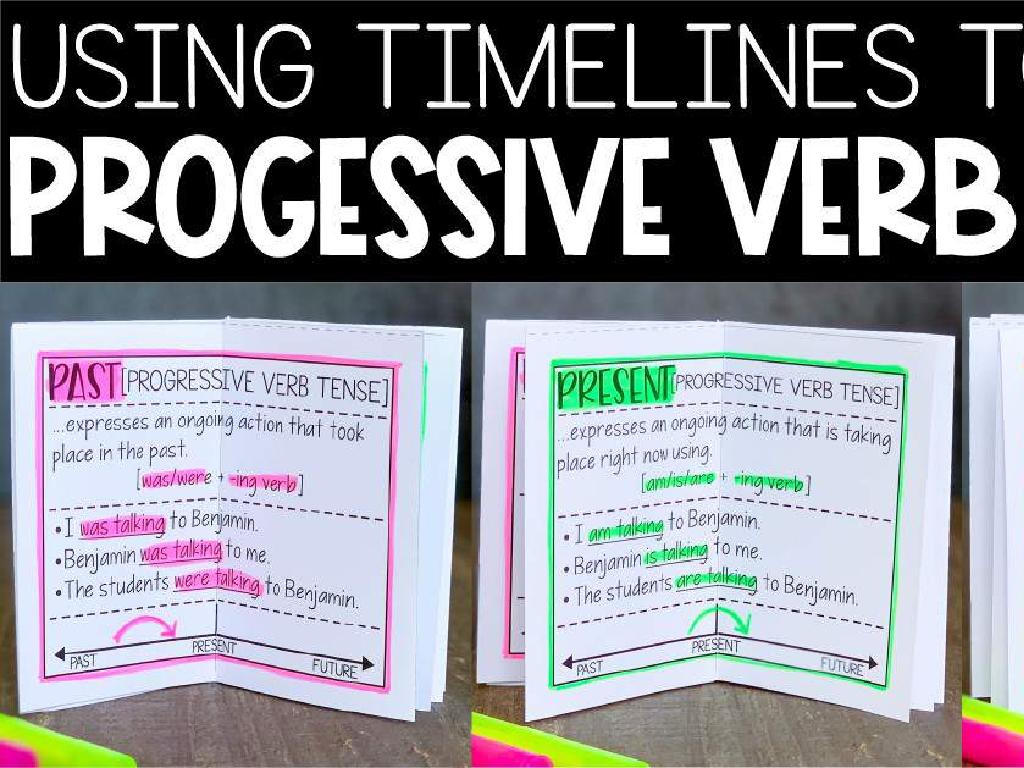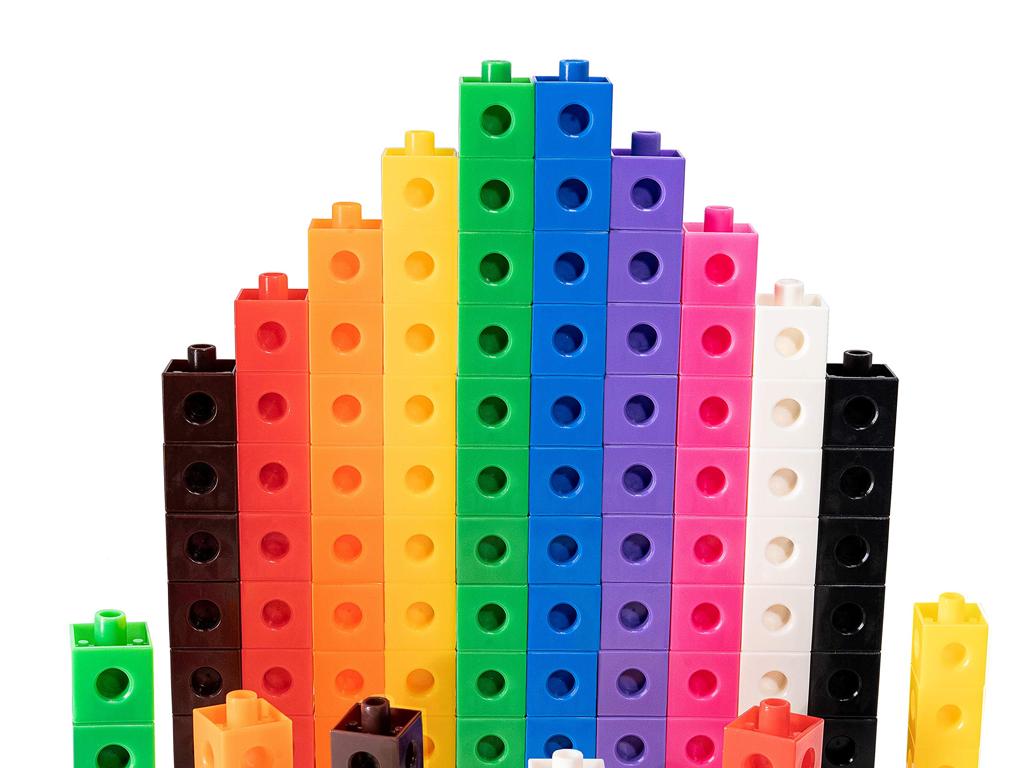Determine The Themes Of Myths, Fables, And Folktales
Subject: Language arts
Grade: Second grade
Topic: Theme
Please LOG IN to download the presentation. Access is available to registered users only.
View More Content
Exploring Themes in Stories
– What is a theme?
– The main message or lesson of a story
– Themes in myths
– Myths often have gods and teach big life lessons
– Themes in fables
– Fables use animals to show right from wrong
– Themes in folktales
– Folktales are old stories with morals and culture
|
This slide introduces the concept of themes within different types of stories such as myths, fables, and folktales. Begin by explaining that a theme is the central idea or lesson that a story is trying to convey. Use examples from well-known myths to illustrate how they often involve gods or heroes and teach important life lessons. For fables, highlight how animals are used to represent human characteristics and to teach moral lessons about right and wrong. Discuss folktales as stories passed down through generations, often reflecting the culture and values of a community. Encourage students to think of stories they know and what lessons they might learn from them. This will set the foundation for identifying themes in literature.
Exploring Themes in Stories
– What is a story theme?
– It’s the main message or lesson from the story.
– Common themes in stories
– Friendship, courage, honesty are some examples.
– Finding themes in stories
– Think about what the story teaches us.
– Your favorite story’s theme?
– Can you remember a lesson from any story you love?
|
This slide introduces the concept of themes in literature to second-grade students. Begin by explaining that a theme is a big idea or message that the writer wants to share with the reader. It’s what we can learn from the story. Use simple and relatable examples like friendship, bravery, and truthfulness to illustrate common themes. Encourage students to think of stories they have read or heard and discuss the themes they can identify. Ask prompting questions to guide them in recognizing the underlying messages in their favorite tales. This will help them understand that stories are not just for entertainment; they also teach us valuable lessons about life.
Discovering Themes in Myths
– Myths explain our world
– Stories from the past that tell us why things are the way they are.
– Gods and heroes in myths
– Characters with amazing abilities that face big challenges.
– Reading a myth together
– Finding the myth’s theme
– The lesson or main idea that the myth is trying to tell us.
|
This slide introduces students to the concept of themes within myths. Myths are ancient stories that have been told to explain natural phenomena, human behavior, and the mysteries of the universe. They often feature gods or heroes with extraordinary powers who embark on epic quests or overcome great obstacles. By reading a myth together in class, students can practice identifying the theme, which is the central message or lesson that the myth conveys. Encourage students to think about what the characters’ adventures might mean and what we can learn from them. This activity will help students understand that themes are common threads that connect stories across different cultures and times.
Finding Themes in Fables
– Fables: short stories with a lesson
– Like ‘The Tortoise and the Hare’ teaches slow and steady wins the race.
– Animals often characters in fables
– For example, a talking fox or a clever rabbit.
– Reading a fable together in class
– Discover the lesson the fable teaches
– What did the characters learn? That’s often the theme.
|
This slide introduces the concept of fables to second graders, emphasizing their structure and purpose. Fables are a great tool for teaching lessons or morals in a way that is engaging for young students. By featuring animals as characters, fables create a fantastical world that captures children’s imaginations and makes the moral lessons memorable. During the class, read a fable aloud and guide the students to identify the theme by discussing the actions and outcomes of the characters. Encourage them to think about what the characters learned and how it applies to their own lives. This activity will help students understand how to find the underlying message or theme in a story.
Exploring Themes in Folktales
– Folktales: stories from the past
– Stories told for many years, teaching us lessons
– Adventures and magic in tales
– Exciting events and magical elements make them fun
– Messages within the folktale
– What is the story trying to tell us?
– Think about the tale’s lesson
– What can we learn from the characters’ adventures?
|
This slide introduces students to the concept of themes within folktales. Folktales are more than just stories; they are a way for cultures to pass down important lessons and morals through generations. As students read these tales, they should be encouraged to look beyond the surface of the story and think about the underlying message or theme. Is it about bravery, kindness, or perhaps honesty? Use examples from well-known folktales to illustrate how adventures and magical elements are used to captivate readers and impart wisdom. Encourage students to discuss the themes they discover and relate them to their own experiences or other stories they know.
Class Activity: Theme Detectives
– Become a theme detective
– Read a story in groups
– Each group gets a different short story
– Discuss to find the story’s theme
– Talk about what the story teaches us
– Share your theme discovery
– Tell the class the theme you found
|
This activity is designed to engage students in discovering the theme of a story by working together in groups. Provide a selection of short stories, each with a clear, age-appropriate theme. Guide the students to think about the moral or lesson that the story is trying to convey. Encourage them to look for patterns or repeated ideas that might suggest the theme. After the discussion, each group will share their findings with the class. This collaborative exercise not only helps students understand the concept of themes in literature but also promotes critical thinking and communication skills. Possible themes could be friendship, honesty, courage, or kindness. Make sure to have a discussion with the whole class after each group presents to reinforce the themes discovered.
Share Your Discoveries: Exploring Themes
– Groups share their discovered themes
– Explain your theme choice
– Why does your group think this is the main message?
– Discuss reasons for theme selection
– What parts of the story led you to this theme?
– Contribute to our class theme chart
|
This slide is designed to facilitate a class discussion where each group will present the theme they identified in a myth, fable, or folktale. Encourage each group to explain their reasoning behind their chosen theme, discussing how the story’s events, characters, and settings support it. As they present, help them articulate their thoughts clearly. After each group has shared, collaborate with the class to create a theme chart on the board, capturing all the different themes identified. This will serve as a visual summary and help reinforce the concept of themes in literature. Make sure to acknowledge each group’s contribution and guide the class in understanding that there can be multiple themes in a single story.
Becoming Theme Detectives!
– Congratulations, theme detectives!
– Themes: Big ideas in stories
– Like friendship, courage, or kindness
– Find themes in all stories
– Every story has a lesson, what is it?
– Keep practicing your skills
– The more you read, the better you’ll get!
|
This slide is meant to wrap up the lesson on identifying themes in myths, fables, and folktales. Praise the students for their hard work and remind them that themes are the underlying messages or ‘big ideas’ found in stories. These can be concepts like friendship, bravery, or honesty. Encourage them to continue looking for themes in every new story they read, as this will help them become more thoughtful readers and understand the story better. Reinforce the idea that practice makes perfect and the more they read, the more skilled they’ll become at detecting themes on their own.






